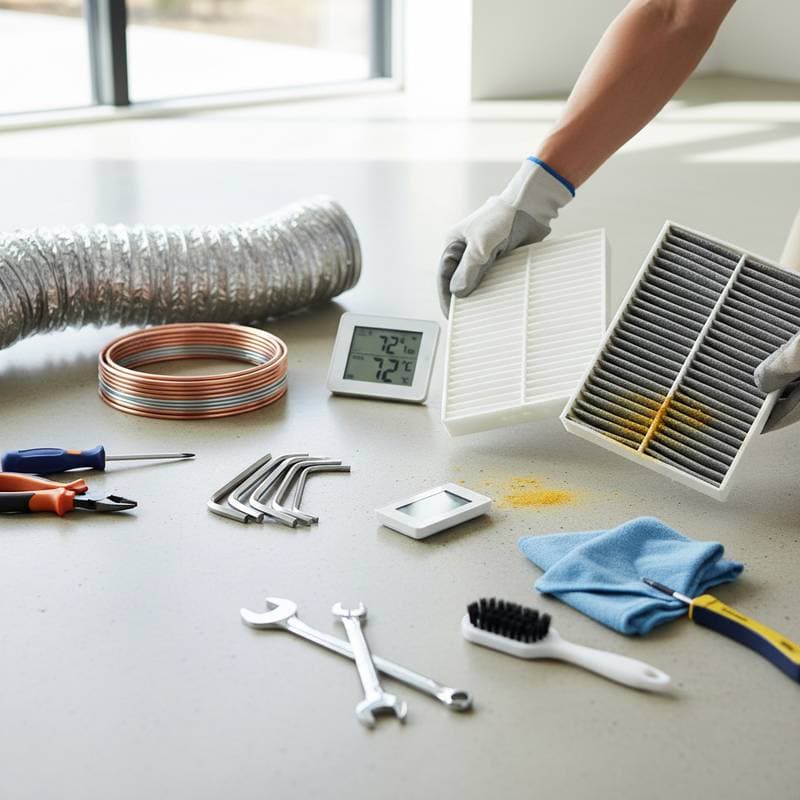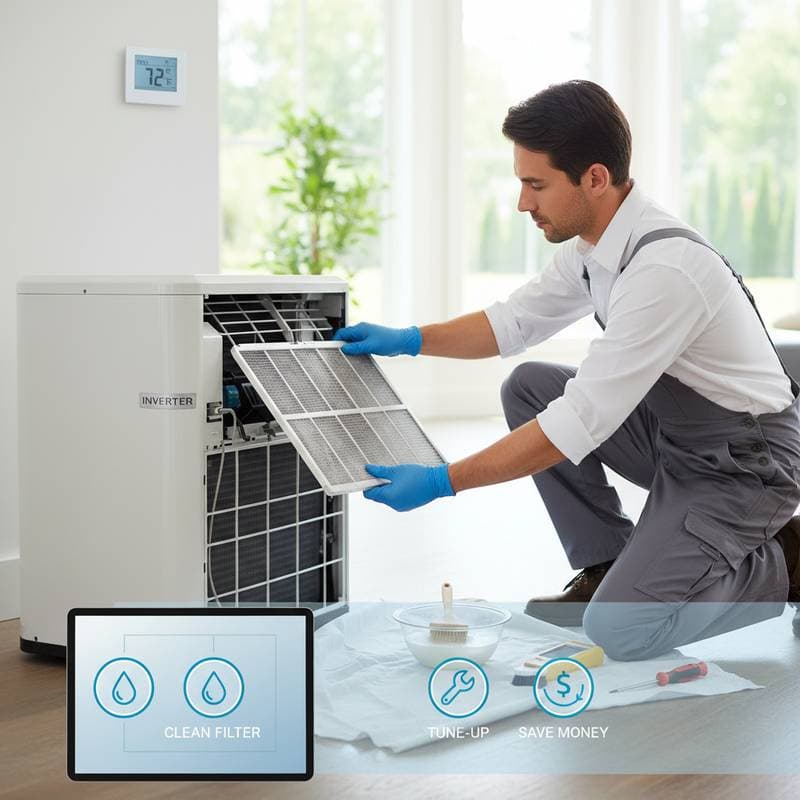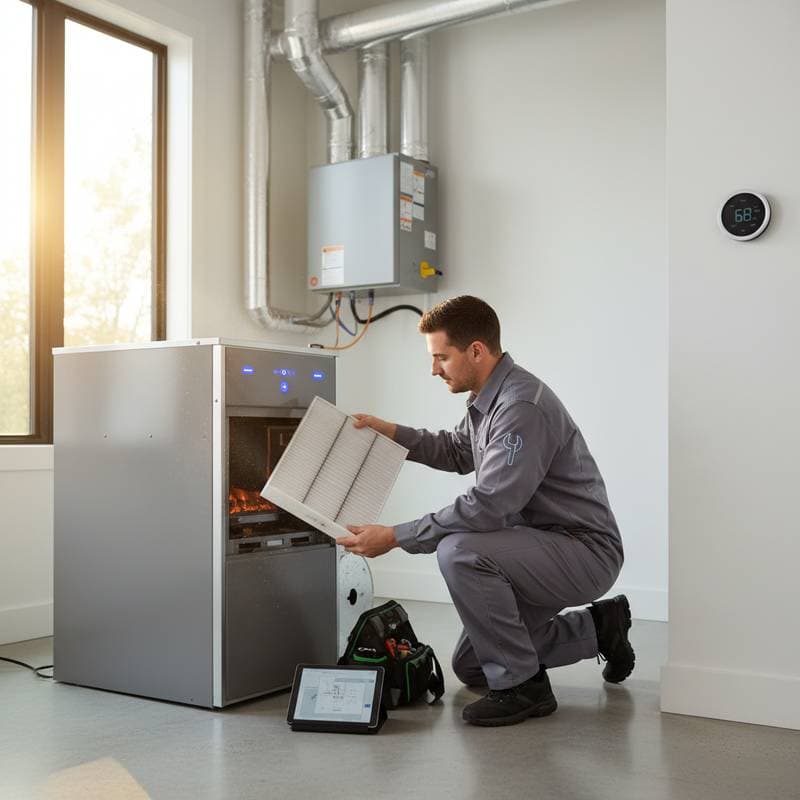Prepare Your Air Conditioner for Summer: Key Checks to Prevent Breakdowns
An air conditioner failure during peak summer heat disrupts comfort and incurs significant repair expenses. As temperatures rise, the system operates under maximum demand. A comprehensive pre-summer inspection identifies potential issues early, ensures optimal performance, lowers energy consumption, and prolongs equipment lifespan.
The Importance of Pre-Summer Air Conditioner Maintenance
Without routine upkeep, an air conditioner labors excessively to achieve adequate cooling. This increased effort accelerates wear, potentially shortening the unit's operational life by several years. Moreover, neglected systems may elevate electricity usage by up to 15 percent. Proactive checks reveal minor problems, such as restricted airflow or electrical faults, before they escalate into major failures requiring professional intervention.
1. Clean or Replace the Air Filter
A clogged air filter restricts airflow, diminishes cooling effectiveness, and forces the system to overwork. Professionals recommend replacing filters every one to three months, adjusted for household occupancy, pet presence, and local dust levels. Select filters with a MERV rating of 8 to 13 for central units to achieve a balance between air circulation and particle capture. Common sizes include 16x20 inches or 20x25 inches; always verify dimensions against your unit's specifications. In homes with high dust or allergens, inspect and replace monthly to sustain peak performance.
2. Clear Debris from the Outdoor Condenser Unit
The outdoor condenser requires a minimum of 24 inches of unobstructed space on all sides to facilitate efficient heat exchange. Sweep away accumulated leaves, twigs, and lawn debris that could impede operation. Gently hose down the coil fins to remove surface dirt, using low water pressure to prevent fin damage. For any bent fins, employ a specialized fin comb to restore alignment without compromising structure. Regularly trim nearby vegetation to maintain clear airflow pathways year-round.
3. Verify Thermostat Functionality and Settings
Prior to the onset of warm weather, switch the thermostat to cooling mode and conduct a test cycle. For programmable models, program settings to maintain 78 degrees Fahrenheit during occupied daytime hours, with a modest reduction overnight for energy savings and restful sleep. If the display appears faint, replace the batteries promptly to avoid operational errors. A faulty thermostat may trigger continuous cycling or complete inaction, leading to uneven temperatures and unnecessary power draw.
4. Inspect and Maintain the Condensate Drain Line
The condensate drain line, typically a narrow plastic pipe, directs excess moisture from the indoor evaporator coil to prevent internal flooding. Buildup of algae, mold, or sediment often causes blockages, resulting in water damage or elevated indoor humidity. Flush the line every few months by introducing one cup of white vinegar followed by one cup of warm water at the access point. Should water accumulate in the drain pan beneath the indoor unit, engage a certified HVAC specialist to address the obstruction thoroughly.
5. Evaluate Ductwork and Vent Systems
Inefficient ductwork can dissipate as much as 30 percent of conditioned air through leaks or poor insulation before it reaches living spaces. Examine joints and connections for separation, then apply aluminum foil tape to seal any gaps securely; avoid using cloth-based duct tape, which deteriorates over time. Confirm that all supply and return vents remain fully open and free from obstructions like furniture, curtains, or flooring. In expansive residences or those with aging infrastructure, schedule a professional duct leakage test to detect and remedy concealed inefficiencies.
Pitfalls to Sidestep During Maintenance
Homeowners often overlook critical safety steps, such as disconnecting power to the outdoor unit prior to any cleaning or adjustment. Selecting an ill-fitting or inadequately rated filter compromises system health. Dismissal of unusual sounds, vibrations, or warm exhaust air signals emerging problems that demand attention. Additionally, avoid enclosing the condenser with aesthetic barriers like lattices or screens, as this restricts vital ventilation.
Correcting these oversights in advance minimizes the risk of emergency service calls and preserves consistent indoor climate control.
Indicators for Professional HVAC Assistance
Certain symptoms warrant expert evaluation to safeguard system integrity. Short cycling, where the unit activates and deactivates rapidly, indicates underlying issues like low refrigerant or thermostat inaccuracies. Unusual odors, such as musty scents or burning smells, suggest mold growth or electrical concerns. Uneven cooling across rooms points to duct problems or refrigerant imbalances. A routine professional tune-up typically costs between 100 and 250 dollars, varying by unit capacity and location accessibility. Technicians assess refrigerant charge, electrical integrity, and compliance with established industry performance benchmarks.
Sustain Optimal Performance Through the Summer
After completing initial checks, monitor key indicators like steady airflow, uniform room temperatures, and absence of excess moisture during operation. Adhere to a schedule for filter changes and post-storm debris removal to uphold efficiency. This ongoing vigilance translates to fewer disruptions, reduced utility expenses, and a more comfortable living environment as the season progresses.





